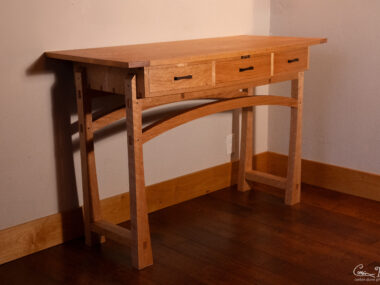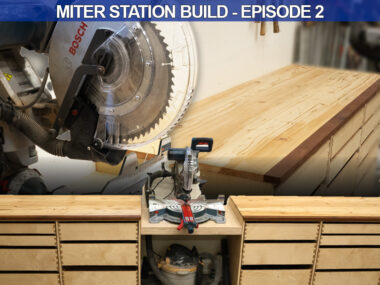Video: Building a Heavy Welded Steel CNC Table
Direct video link: Avid CNC Steel Table Build
One of the biggest complaints of the Avid CNC is that the table isn’t heavy enough. A heavier table will help produce better cuts on a CNC machine. A typical metal knee mill weighs around 2200 pounds, but it will only have a relatively small work area. The beefy weight helps absorb chatter, which can show up in your finished parts. This type of chatter is just the cutter working against the metal that it is cutting.
Wood CNC machines also can cause chatter marks, but it is usually due to a different reason. The heavy gantry and spindle contain a lot of momentum, and suddenly stopping that momentum can cause a slight over cut on your workpiece. This happens when the machine is switching directions — particularly a rapid direction change from y+ to y- along the length of the machine.
The default Avid CNC build will usually involve an aluminum leg kit. People can strengthen it by adding on MDF sides, which will also add on a lot of weight to help absorb the rapid movement changes and reduce chatter.
I opted to weld my own table up, as shown in the video above. I designed the metal legs and base in CAD using Fusion 360. Check it out in your browser, and download the file to use as a base for your own machine: Fusion 360 Metal Base CAD Design.
I think my steel table does help reduce chatter as it weights twice as much as the aluminum table does, but I am still seeing chatter marks in my wood projects.
The CAD design shows an update I plan to do: add some bottom lengthwise steel members, and 45 degree supports going down from the center leg. I’m hoping this will stiffen up the machine and reduce the chatter I see along the y-axis. The x-axis doesn’t seem to have the issue, and it is a lot stiffer due to the lower cross members that I already have in place.
I plan to generate a test GCODE file and measure the current movement with a dial test indicator. I can then accurately compare how well my modification will or will not work. I have done ad hoc measurements, and I see up to 0.010″ of movement at the top of the table along the y-axis when doing rapid 180 degree movements along the y.
Chatter can also be reduced by slowing the machine’s acceleration down. This is easily tunable in the CNC software Mach 4, but I’m seeing if I can reduce it in other ways before slowing the machine down. Taking a little more time to accelerate in order to get a better finish can definitely be worth it, and I will eventually look into this if I still have issues.





